- 1. How to Launch a Boat? (Solo and with Help)
- 1.1. Prepping Boat for Launch
- 1.2. Backing Down the Ramp
- 1.3. Getting the Boat Off the Trailer
- 1.4. How to Launch a Boat By Yourself?
- 2. How to Anchor a Boat?
- 2.1. Setting an Anchor
- 2.2. Retrieving the Anchor
- 2.3. Additional Anchoring Tips
- 3. How to Dock a Boat?
- 3.1. Tying a Bowline Knot
- 3.2. Cleating to the Dock
- 4. How to Trim Your Boat?
- 5. 5 Must-Know Boat Navigation Tips
- 5.1. 1. Red, Right, Return
- 5.2. 2. Brown, Brown Run Around
- 5.3. 3. Green, Green Nice and Clean
- 5.4. 4. White, White You Just Might
- 5.5. 5. Blue, Blue Run on Through
- 6. Always Look Your Best When Out on the Water
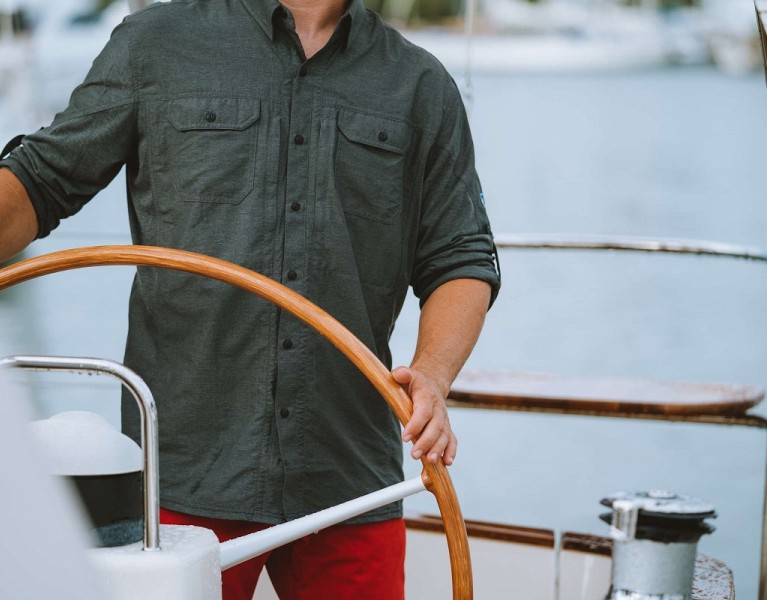
An In-Depth Beginner Guide To Boating (Tips, Tricks, Clothing)
Table of Contents [Show]
If you are a first-time boat owner, considering buying a boat, or even renting one for a weekend getaway or family vacation, you know that boating can be an incredibly fun and relaxing experience.
In fact, research shows that boating can have a positive impact on both your physical and mental health. From a boater's perspective, the research seems credible. There is nothing better than setting sail and riding the waves, feeling that smooth ocean breeze under the crisp summer sun.
However, you cannot get your boat and immediately set sail, throwing caution into the wind and hoping for the best. You need to thoroughly understand the basics of boating before embarking on your first official maiden voyage. Knowing the basics ensures a fun, safe, and rewarding boating experience.
In this boating 101 series, we cover everything from docking your boat to anchoring, tying the essential boating knot, vital navigation tips, and more. Read some of the best boating tips for beginners and make sure to check out our new boating checklist with essentials items for boating safety, such as distress flares, a life jacket and a fire extinguisher.
How to Launch a Boat? (Solo and with Help)
Before you set sail in the water, first you need to know how to get your boat in the water without damaging it or your vehicle. A successful boat launch is an exhilarating experience for first-time boat owners. Not to mention, once you can properly launch a boat, you can trailer it and freely explore any body of water you wish. Here is how you can successfully launch a boat, both with help and by yourself:
Prepping Boat for Launch
If you are brand new to boating, the best way to get your boat in the water is through launching ramps. Most public parks, lakes, and other waterways have launching ramps, as well as private campgrounds and marinas. If you have never used a particular launching ramp before, it's best to put your vehicle in park and inspect the ramp and dock beforehand.
Examining your launching location ensures you know how steep the ramp is, how deep the water is, and the overall conditions of the dock. Likewise, observe traffic flow, so you know the best place to park your vehicle and trailer immediately after launch. It's customary etiquette to launch your boat as quickly as possible, so you want to be quick when clearing your car off the ramp.
Backing Down the Ramp
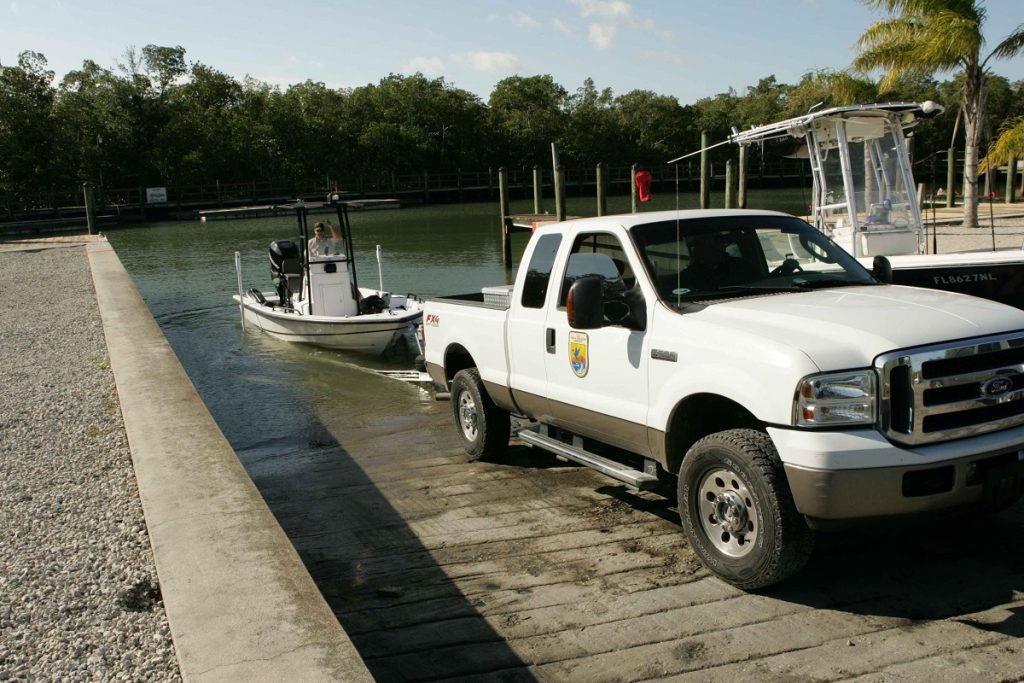
Once you've examined your surroundings, back down the ramp and prepare for launch. Ensure your boat and trailer are aligned to back straight down. If you have a helper, they can spot for you. Have them positioned where you can see them through your left-hand mirror. Then, back down slowly. Going slow ensures you have more reaction time to adjust if things become crooked. Continue to back down the ramp until the trailer reaches the water. If the stem of the boat is deep enough in the water to float, then you can prepare the final launch. However, if it is not floating, continue to back down a little further, but be cautious.
Getting the Boat Off the Trailer
Once in the water, put your vehicle in park and set the emergency brake. Next, remove the safety chain from the bow eye, and release the trailer winch so you can unclip the straps from the bow eye. If using a helper, hand the bowline to them and give your boat a slight push. It should slide off the trailer and float in the water. Your helper can then hold the lines and walk your boat down until it is clear from the ramp. Walk the boat away from the ramp as quickly as possible, so you are not in the way of the next party. Make sure to start the boat's engine before releasing the bowline. Your helper can then drive away and pick you up at the dock, while you go park.
How to Launch a Boat By Yourself?
If you have never launched a boat before, we highly recommend using a helper at least for the first couple of times. Launching by yourself is essentially the same routine up to launching. Just be more careful when backing down the ramp and continuously check your mirrors to ensure you are aligned. You need a secure line attached to your boat to prevent it from floating away. Once the boat is free, hop on the dock and use the line to walk it away from the trailer. After that, all you have to do is secure your boat to the dock, and park your vehicle.
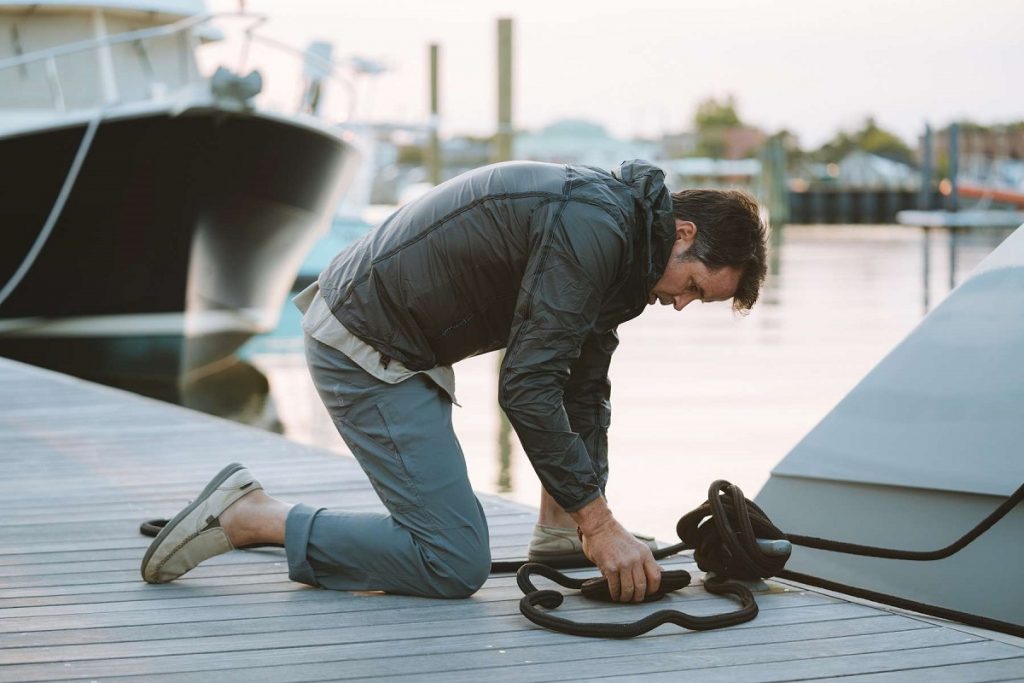
How to Anchor a Boat?
Now that you have successfully launched your boat, you can finally enjoy all the wonderous benefits boating has to offer. Although launching is an essential seamanship skill, anchoring is another skill all boaters should master.
Knowing how to set an anchor and retrieve it is critical when you're out on the water. Not to mention, an anchor holds your boat in place, so you can find secluded swimming spots, swim for hours, and not have to worry about your boat drifting away. It's an essential piece of safety equipment, as it can prevent your boat from drifting in the event of boat engine failure. Anchoring boils down to two distinct processes:
Setting an Anchor
If possible, first determine the water depth where you're dropping your anchor. We suggest using a depth finder if you have one. Water depth determines the appropriate amount of anchor scope required. Anchor scope is the ratio length of the anchor with respect to the water's depth. The ideal ratio is 7:1, where you have seven feet of anchor scope for every one foot of water depth. For example, if you know the water depth is 10 feet, you want to motor your boat in the direction of the wind 70 feet from your anchor spot. Once you let enough scope, secure the rope to a bow cleat, then put your boat in reverse to set your anchor at the bottom.
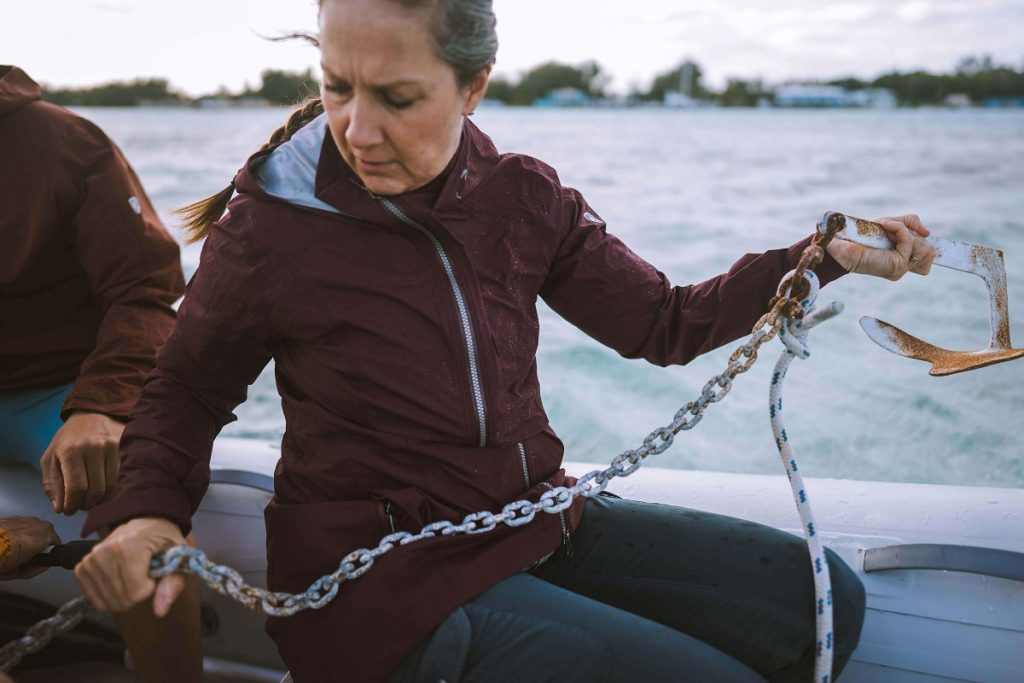
Retrieving the Anchor
When you want to move again, you need to retrieve your anchor. To raise the anchor, slowly motor your boat towards its location while pulling the rope inside. When directly above the anchor, it should easily pull free. However, if stuck, slowly drive the boat in a large circle around the anchor to change the direction of the pull on the rope. If that does not break the anchor free, another method you could try is positioning your boat directly above the anchor and tying the line around the cleat. Make sure it is taut, so when the bow dips at the bottom of a wave, the next wave lifts the boat and breaks the anchor free.
Additional Anchoring Tips
One of the additional boating tips for anchoring is to never tie off an anchor to the stern of your boat or pull a stuck anchor with your engine while tied to the stern. Doing this might result in the stern dipping below the water, which could quickly fill the boat and result in a very treacherous situation. If you cannot release a stuck anchor, it is best to cut the line and replace it.
How to Dock a Boat?
For those just getting started with boating, docking can be an intimidating and stressful experience. Fortunately, docking a boat does not have to be difficult, and boaters can quickly master the task.
To successfully dock your boat, first prepare dock lines on both your stern and bow, and attach fenders. Next, align your approach and observe your docking area. You should also judge all current, wind, and water conditions before slowly proceeding to the dock with intermittent acceleration. Never approach a dock faster than you are willing to hit it. Before the final approach, turn your boat to come alongside the dock or navigate it into the boat slip. Finally, tie your boat off onto cleats, pilings, or posts with your docking lines.
Tying a Bowline Knot
The bowline know is the most important knot every boater should know. It is so useful that sailors have been using it for over 500 years. It is an incredibly practical knot for tying materials around posts or other fixed objects, as well as tying two lines together. Bowline knots also tighten under pressure, so you do not have to worry about it giving way. Even better, it is a relatively simple knot to tie that everybody could learn.
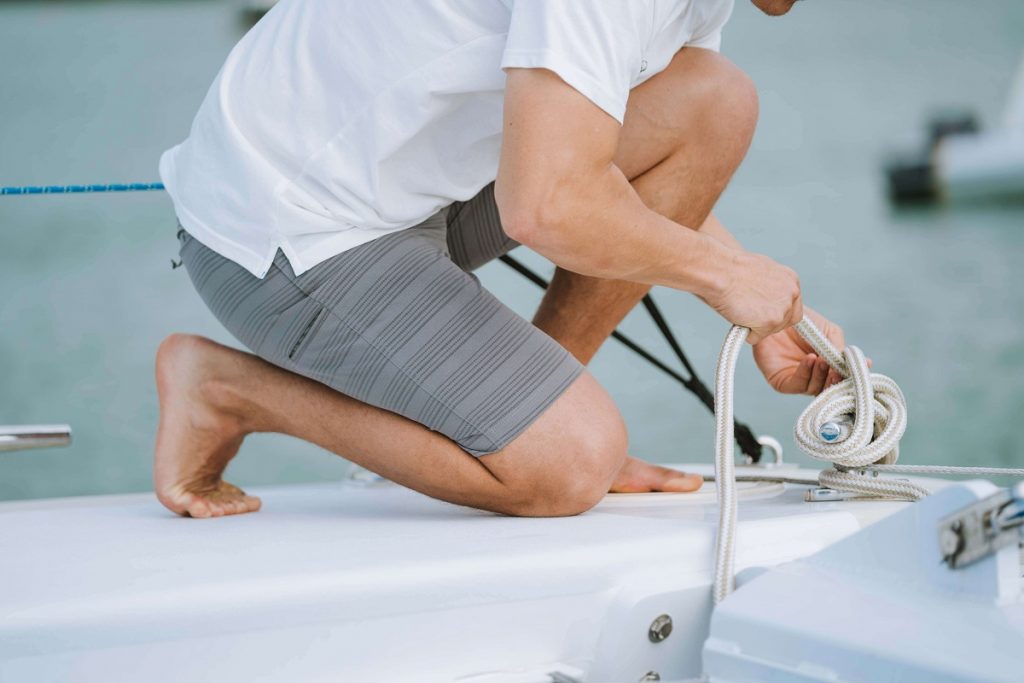
- Step 1: Fasten a loop near the end of the line. The size of the loop depends on how big you want the final knot.
- Step 2: Run the end back through the loop.
- Step 3: Then, run the line back around the standing end and through the small loop.
- Step 4: Finally, grasp the end and pull tight.
If you followed the four steps correctly, you should have a nice bowline knot even if it's your first time. Here are more pictures to help you visualize the tying process.
Cleating to the Dock
Now that you know how to tie a basic bowline knot, it is time to take your knot knowledge to the next level by cleating your boat to a dock. Most docks have cleats, which are t-shaped pieces of metal or wood, where you can attach a rope.
To begin the process, take your rope and tie it completely around the cleat at the point furthest away from your boat. Once completing a full turn, take the rope over the top of the cleat. You should form the first half a figure-eight.
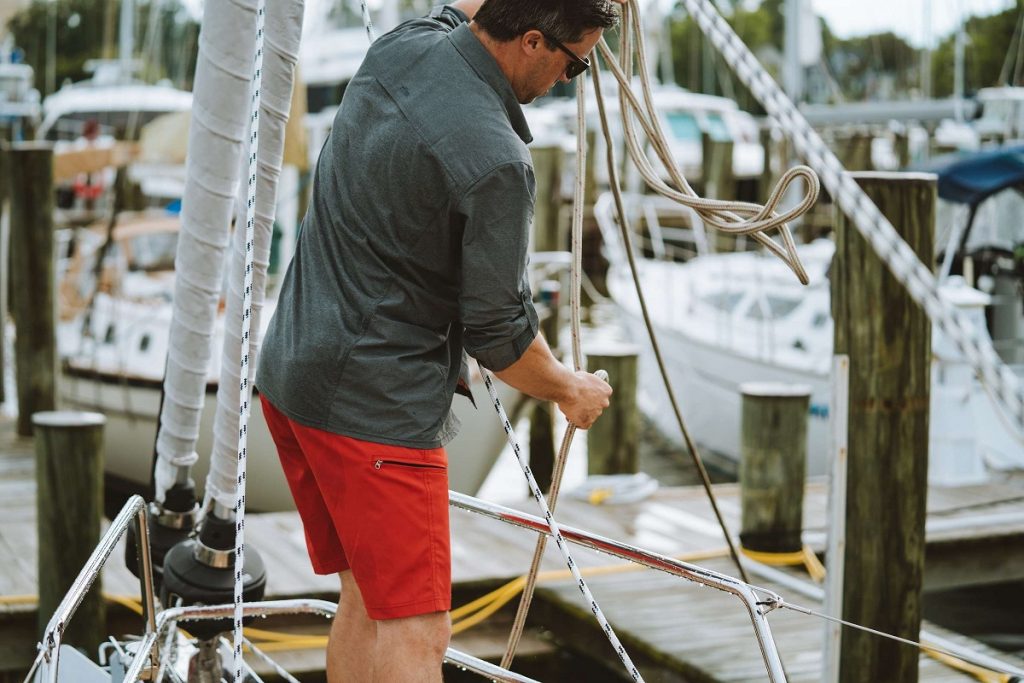
Next, keep the figure-eight form, but form the second half of the eight into a hitch. You can do that by flipping the blight over and pushing it through the horn of the cleat. Make sure there is one line on top of a two-parallel line configuration, then tighten. For further assistance, here is an in-depth video on how to tie the perfect cleat hitch.
How to Trim Your Boat?
Many fresh-face boaters may not even know what trimming means. However, it is an incredibly essential element of boating and one of the best boating tips. Simply put, trimming is changing the boat's angle as it moves through the water. When you adjust your trim, you are either lowering or raising the bow for more efficient travel. If done correctly, trimming can positively improve your boat's performance as well as its fuel economy.
You can control your boat's through a toggle button on the dash or control lever. The system generally uses hydraulic rams, which changes the angle of the sterndrive gearcase or onboard motor, with the angle of the propeller shaft, relative to the transom. The shift has a range of approximately 20 degrees. When the boat's prop shaft is parallel with the water surface, the trim is at zero, or neutral. When you shift your trim button-down, the gearcase gets closer to the transom, which bottoms out at negative 6 degrees at neutral trim. At this point, the prop shaft aims 6 degrees upwards, which lifts the stern of the boat. And when the stern lifts upwards, the bow pushes down.
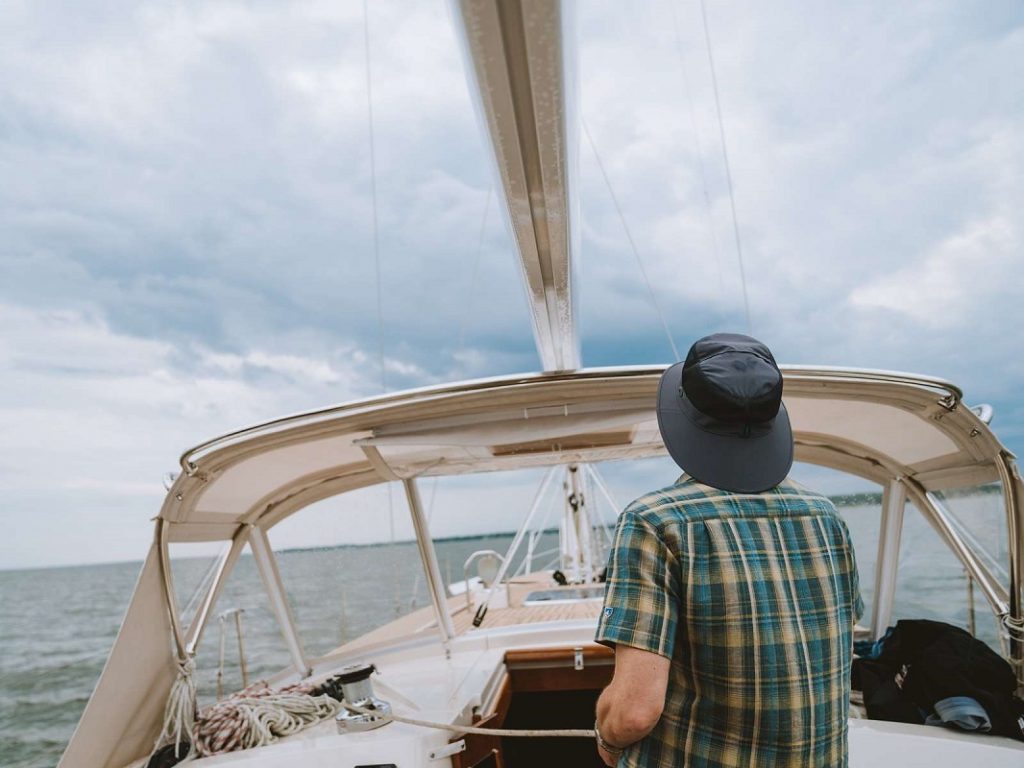
When you shift your trim button-up, the gearcase moves away from the transom and points the prop shaft downward. Now, the prop thrust is pushing the stern downward, thus lifting the bow. And it important to remember, the bow always moves in the same direction as the trim button: button-down is bow down, while button-up is bow up. To successfully utilize trimming, you should trim down to accelerate away from dead water or soften the ride through rough seas and significant headwinds. And once your boat is on the plane with the water, trim up to raise the bow. Raising the bow allows the boat to skim along the top of the water, rather than just pushing through it, which causes drag.
5 Must-Know Boat Navigation Tips
Now that you understand all the boating basics, such as docking, trimming, loading, and anchoring, you're almost ready for a fun and lively boating experience. Before you officially set sail for an afternoon of delight, there are some additional boating tips all boaters should know to ensure a safe outing. Here are five phrases you should always remember when out at sea:
1. Red, Right, Return
Ever notice those red buoys in the water before? Well, they are there for a reason. Whenever you are returning to the dock, the red buoys should be on the right of your boat, hence red, right, and return. And conversely, they should be on the left when you are leaving. Knowing which side to be on whenever leaving and returning minimizes the risks of collision with other boaters while on the water.
2. Brown, Brown Run Around
Whenever you are in clear water and see a brown patch, it generally indicates that something potentially hazardous is close to the surface. Potential hazards include rocks, coral, debris, etc. Heading in that direction could very well result in you running aground on them. That's why it is crucial to avoid any brown spots in the water.
3. Green, Green Nice and Clean
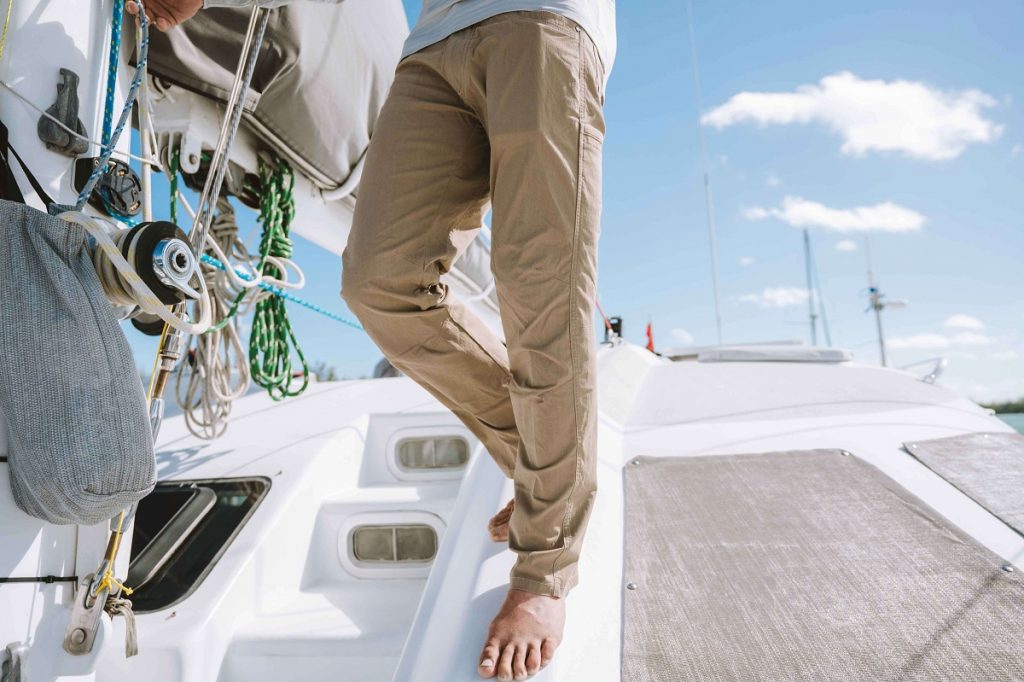
Contrary to brown water, green water generally indicates the area is free of seagrass beds or shallow reefs. Navigation through these areas is usually safe. However, larger vessels should proceed with caution. One of the best boating tips for beginners is to have the NOAA marine chart at hand at all times to know which regions are safe for bigger boats.
4. White, White You Just Might
White areas in the water generally indicate white sand bars and rubble areas. These areas are notoriously deceiving, for they can be completely safe to drive through, or much shallower than they initially appear. Always navigate with caution through white patches.
5. Blue, Blue Run on Through
The opaque blue water represents a deep area. When in blue water, you can navigate through hazard-free without the worry of contacting coral reefs or seagrass. However, be aware that coral reefs rise rapidly from deep ocean water, so always give yourself ample room when maneuvering through potential reefs.
Always Look Your Best When Out on the Water
Here at KÜHL, we make the perfect boat wear for men and women. If you are new to boating, or men's and women's boating apparel, check our top-notch collections of sun-protective or water-resistant clothing made for enjoying the waves. And don't forget to check the life jacket laws in the US state you're planning to go. Also, it's a good idea to leave a float plan with someone on the shore if you're going long-distance boating or you just want to be extra safe.


